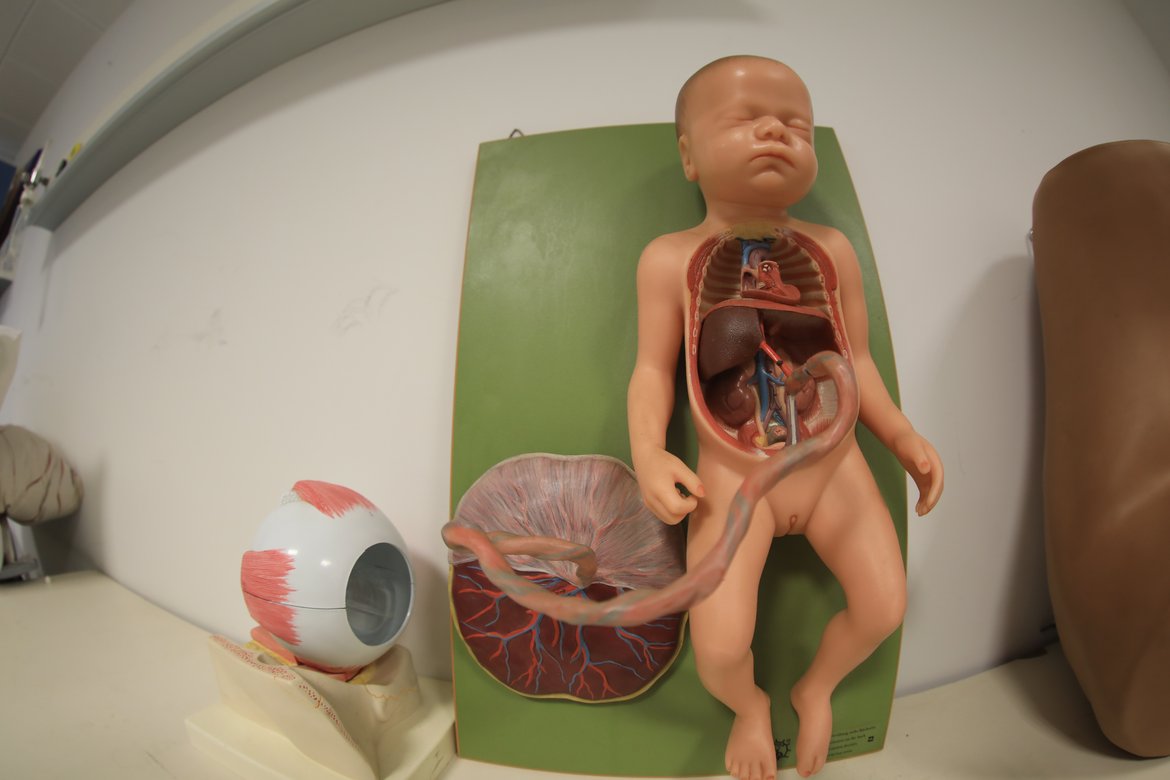Faculty of Nursing has introduced maternal health laboratory according to the accreditation committee regulations to improve the educational process's practical aspects. This laboratory uses various ways in learning like videos and CDs that explain the process of pregnancy and childbirth and full training on pregnant women dolls, demonstrating the method of standard delivery in response to theoretical knowledge.
To be a model center for advanced clinical training and simulation in maternity and child health nursing, preparing competent and skilled nursing and midwifery students capable of delivering comprehensive, evidence-based, and safe care to mothers and newborns in alignment with international healthcare standards.
To provide a fully equipped, realistic simulation environment that enables nursing and midwifery students to acquire the clinical and practical competencies required for the care of pregnant women, childbirth, postpartum care, and newborn health. The lab fosters professional readiness and supports the delivery of high-quality healthcare services.
- To equip students with basic and advanced clinical skills in maternity and newborn care.
- To train students in the assessment and management of pregnant women during the antenatal, intrapartum, and postpartum periods.
- To develop students’ abilities to identify and manage complications related to pregnancy and childbirth.
- To bridge theoretical knowledge with hands-on experience using advanced manikins and instructional videos.
- To simulate hospital-like settings using modern tools that enhance students’ readiness for real clinical practice.
- To integrate evidence-based practices into maternal and child health nursing education.
- To evaluate students’ performance through structured practical (OSCE) and written assessments that reflect clinical competencies.
The Maternity and Child Health Nursing Laboratory was established at the Faculty of Nursing in accordance with national and international accreditation standards to complete the practical component of courses such as Maternal Health Nursing and Maternal and Child Health. It serves both nursing students and midwifery students by offering a simulated hospital environment equipped with a variety of high-fidelity training tools and anatomical manikins.
Students are trained using instructional videos that demonstrate the entire pregnancy and childbirth process. They also receive hands-on training using models representing the pregnant woman, delivery stages, postpartum care, and newborn resuscitation. The lab aims to enhance the clinical decision-making and assessment capabilities of midwifery students in caring for mothers and neonates, including managing complications that may arise during or after childbirth.
Students are organized into small groups on a weekly schedule. The practical hours are conducted separately from theoretical sessions and include structured assessments, such as written exams and clinical performance tests (OSCE). The laboratory acts as a foundational component in preparing students for their clinical fieldwork and ensures that they enter healthcare settings with confidence and competence.



